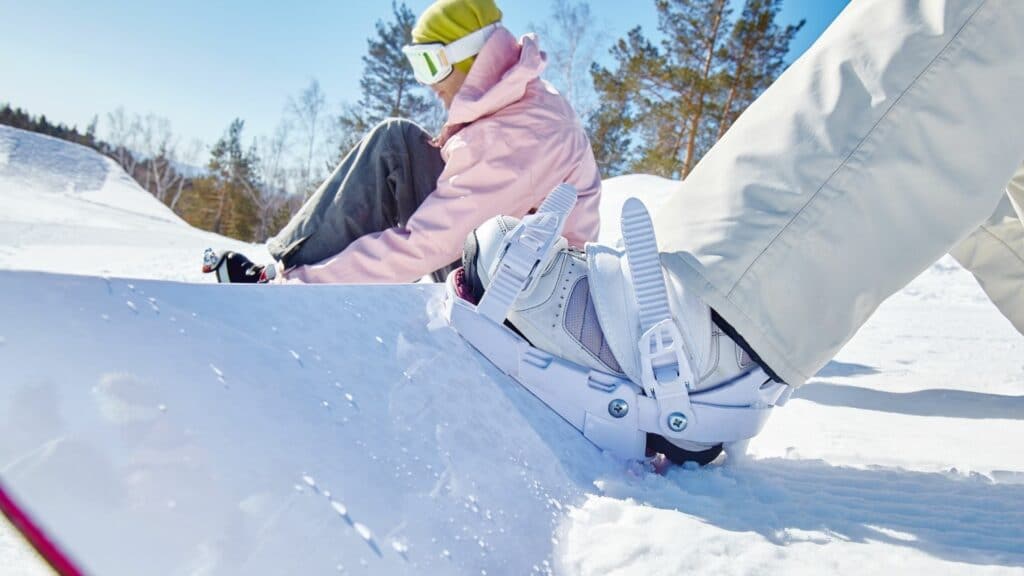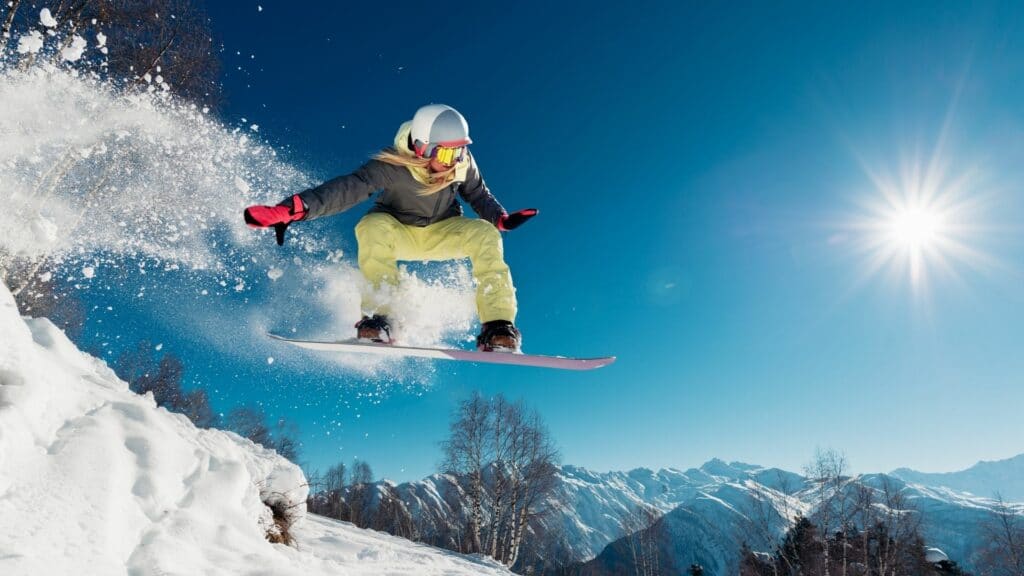Selecting Alpine Skis With Ease and Professionalism
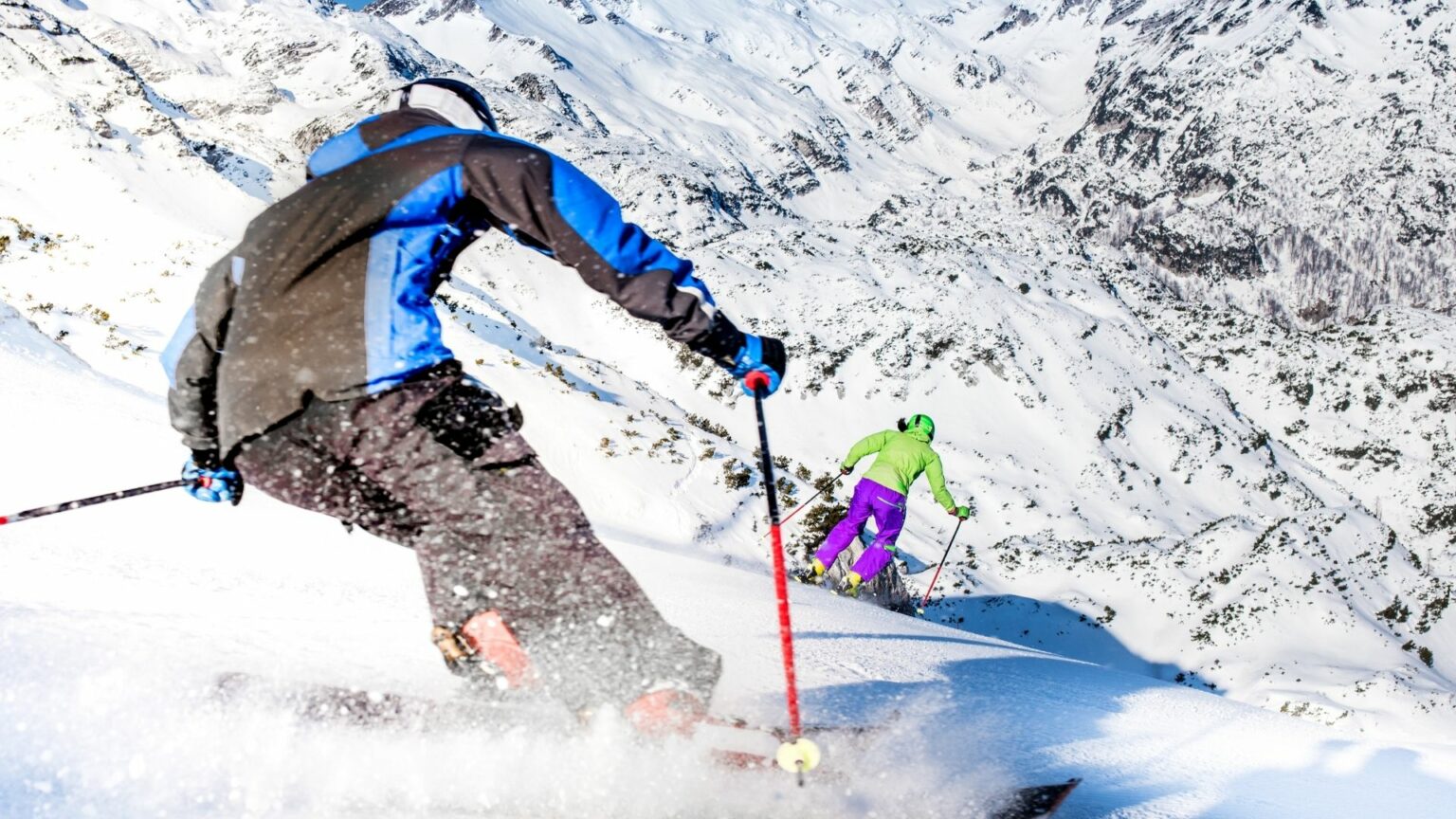
Last Updated: December 16, 2021
Alpine skiing first appeared in the mid-1860s in the Austrian Alps on the Untersberg, a mountain close to Salzburg. It’s considered as one of the most popular winter sports. Shortly after their creation, though, race courses were created where skiers would race each other while they slid downhill.
This is a very physical sport, which also requires balance and coordination. Originally, there was an upper part longer than the lower part, making it easier for skiers to retain control over the snow. The two parts are now equal in length, making the ski much easier to handle. Choosing the right ski can be difficult, especially if you don’t know what to look for. But we’re here to help!
Finding the right ski length starts with assessing your current ability level and style of skiing. Your height will also be a good indicator of length, as well as your body weight. As well as finding the right length, you’ll want to think about width; how flexible or stiff the ski should be; and its intended use. All this information should be taken into account when choosing your next set of alpine skis.
Ski Length
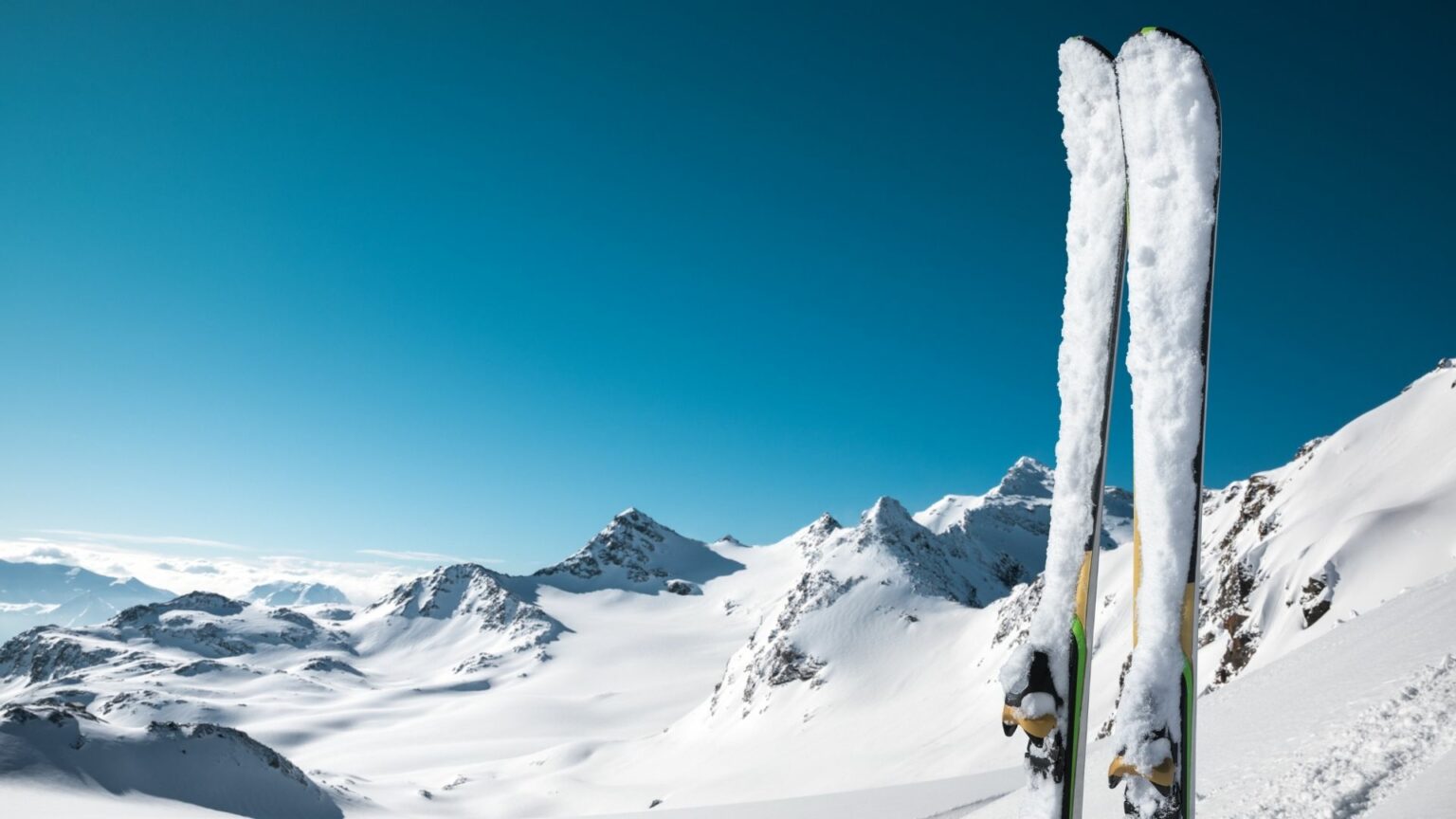
If you’re new to skiing or if you’re just looking for a refresher course, the topic of ski size is one that can be confusing. Especially since there are so many different charts and charts out there giving you conflicting advice.
So, what’s the best way to choose which ski length is right for you? After all, choosing the wrong ski length can lead you not only to a less than ideal ride but can also be dangerous.
You may begin to hunch over your skis as you try to maximize every bit of power and energy necessary to get yourself down the mountain. Or there’s the flip side of things, where you’re forced to use wide and unstable stances which can cause injury when skiing at high speeds or over difficult terrain. Everyone has their own take on how to choose the right ski size. But there is no magical formula for finding the perfect pair of skis.
There are many factors to consider, and the truth is that height and weight play a little part in determining which size of ski to use. Other factors include your personal preference, snow type, terrain, and even what type of ski you are riding. When searching for the right ski length, we’d recommend that you follow the general rule of thumb: your ski’s length should be somewhere between your chin and the top of your head.
And although these recommendations may suggest that a bigger ski is better, this is false thinking. In reality, it’s important to remember that the ski length isn’t determined by height alone — it’s determined by skill level as well. Advanced skiers often prefer longer skis because they give them more leverage while they are turning and carving on the snow. Beginners enjoy shorter skis because they require less effort when traversing through various terrains.
As mentioned before, your fit on the ski plays a huge role in determining your comfort level. Regardless if you want to purchase your equipment online or in-world, we highly suggest trying it first to ensure you know what works best for you – instead of guessing how something will feel when you don’t know the lengths. Ski length refers to the distance between the tip and tail of any ski. Shorter skis will be easier to turn, but they are not as stable as longer models.
They will also be lighter but less stable. Longer skis are heavier and less maneuverable. However, they are more stable. If a skier is considering which ski model to buy, their ability and preferences must be taken into account. The ski industry is constantly making new models and trying to rebrand old models. The most change comes in about 5-8 years when the current models are slowly discontinued for better ones.
However, there is a steady stream of new types of skis being introduced every year with the purpose of satisfying many different skiing styles that customers have. There are freeride, big mountain, all mountain, park and pipe, and carving skis. Carving skis, also known as race skis or slalom skis, are lightweight and narrow shaped making them great to carve tight turns on. They tend to be around 100 cm long and weigh around 2.5 kgs, depending on the model.
Carving skis, also sometimes called performance carving skis, are designed for skiers who use one leg to initiate a turn and the other to finish it. These skis have impressive initial turn initiation from the tip and tail, but limit the amount of arc in your turns. Skis of this kind are designed for speed, maneuverability, and very tight turns. As their name implies, carving skis are ideal for carving on the groomed slopes, particularly those that have hard snow.
The design of carving skis makes them capable of very fast acceleration and rapid changes in direction to take full advantage of the snow’s surface. Skis can be classified into two categories: rocker and camber. Rocker skis are designed so that the tip and tail rise upward in the middle of the ski, whereas camber skis are standard; these skis maintain a downward curve from tip to tail. Rocker skis measure about 10% longer than camber skis.
Rocker skis are easier to maneuver. The skier can simply tip the ski on edge and they will carve a hard turn. This is in comparison to camber skis which require the skier to sit back on their heels before carving. Rocker ski tips are also more forgiving, so it is easier for newbie skiers to move between turns with less effort required.
Ski geometry is important to the terrain you ski, and the type of skiing that you enjoy. When it comes to snow ski’s, camber skis are typically preferred for experts who want more quickness and agility, as well as easier edging capabilities.
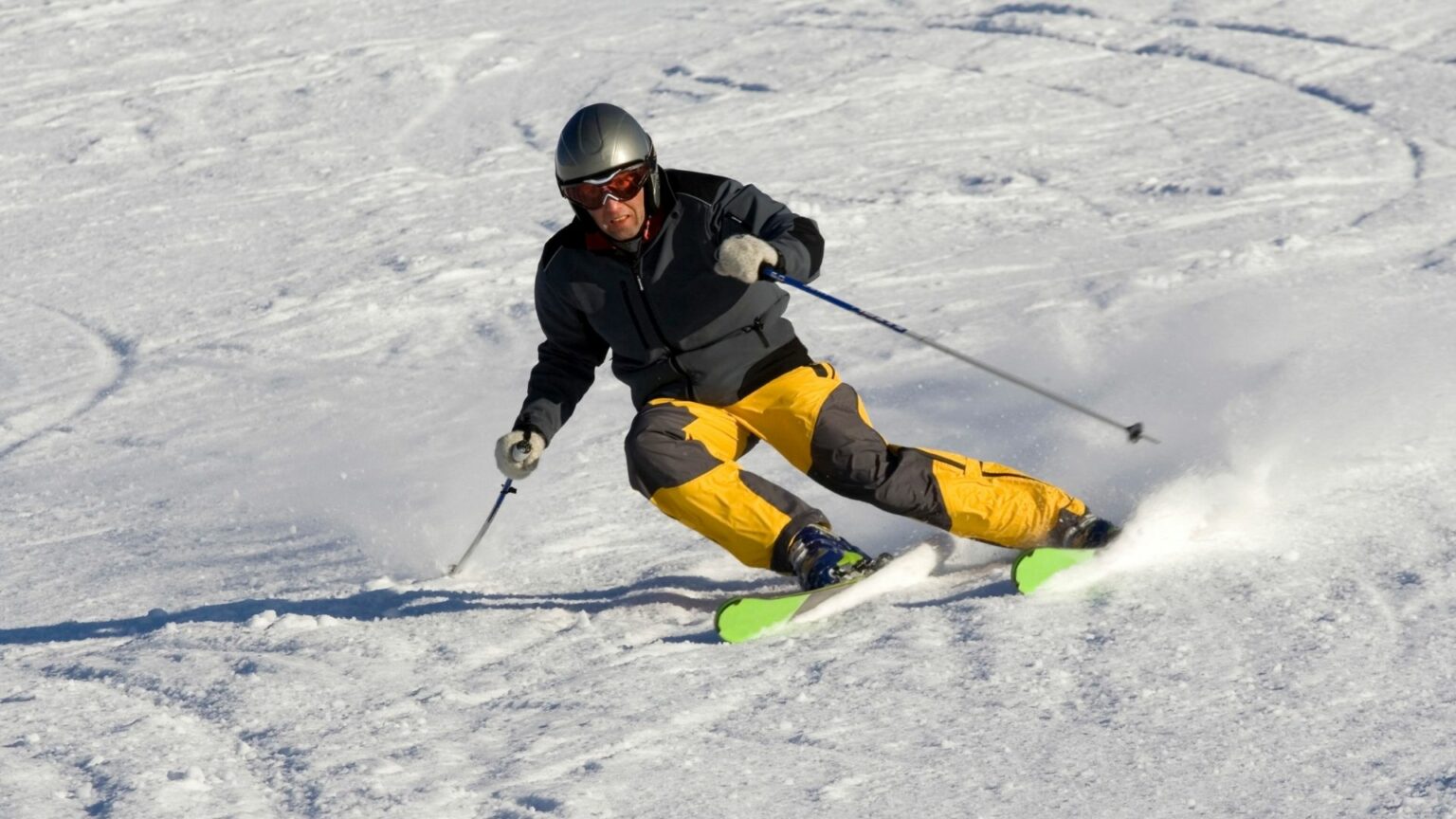
Four main reasons to choose shorter skis that are closer to your chin in length :
- Prefer sharp and short turns and do not ski too often.
- You are a beginner or intermediate skier.
- Want to use a clear terrain carved ski without a rocker.
- Your body weight is less than average for your height.
Four main reasons to choose longer skis that are closer to the top of your head :
- Your plans include freeride and off-piste skiing.
- Speed and aggressive riding style.
- Your body weight is greater than the average for your height.
- Prefer a ski with a large rocker.
Before ordering a pair of skis, it is important to understand how ski lengths are measured. Savvy shoppers know this and take these facts into consideration when shopping for skis. This ensures that they purchase a pair of skis that will be the best fit for their height, skill level, and ability. The rest of the less knowledgeable or nonchalant shoppers end up purchasing a pair of skis that is either too long or too short for them.
The result is skiing that either feels awkward or unable to ski at their full potential. Not all ski lengths are created equal. Due to manufacturing variables and differing methods among the ski industry, ski manufacturers do not always measure ski lengths the same way. As a result, one brand’s size eight ski can easily be longer or shorter than another brand’s size eight ski.
In order not to be disappointed by your new skis, you should pay close attention during the purchase process. Before buying skis that you haven’t tried on, consult with an expert who knows how particular brands of skis measure up and can advise you accordingly. In fact, the exact length of a ski may differ across brands for the same «size». Why? Because ski manufacturers don’t use the same measurements when determining the length of their skis.
Most often, one brand will use the tip-to-tail measurement, while other brands use the tip-to-kickplate measurement, and yet others use the tip-to-crotch measurement. Needless to say, this discrepancy can definitely lead to confusion and frustration when skiing with friends who are riding on different length skis than you. In order to avoid running into this problem, it’s usually best to always have a set of measuring tape handy to determine your personal ski size.
Skating Level
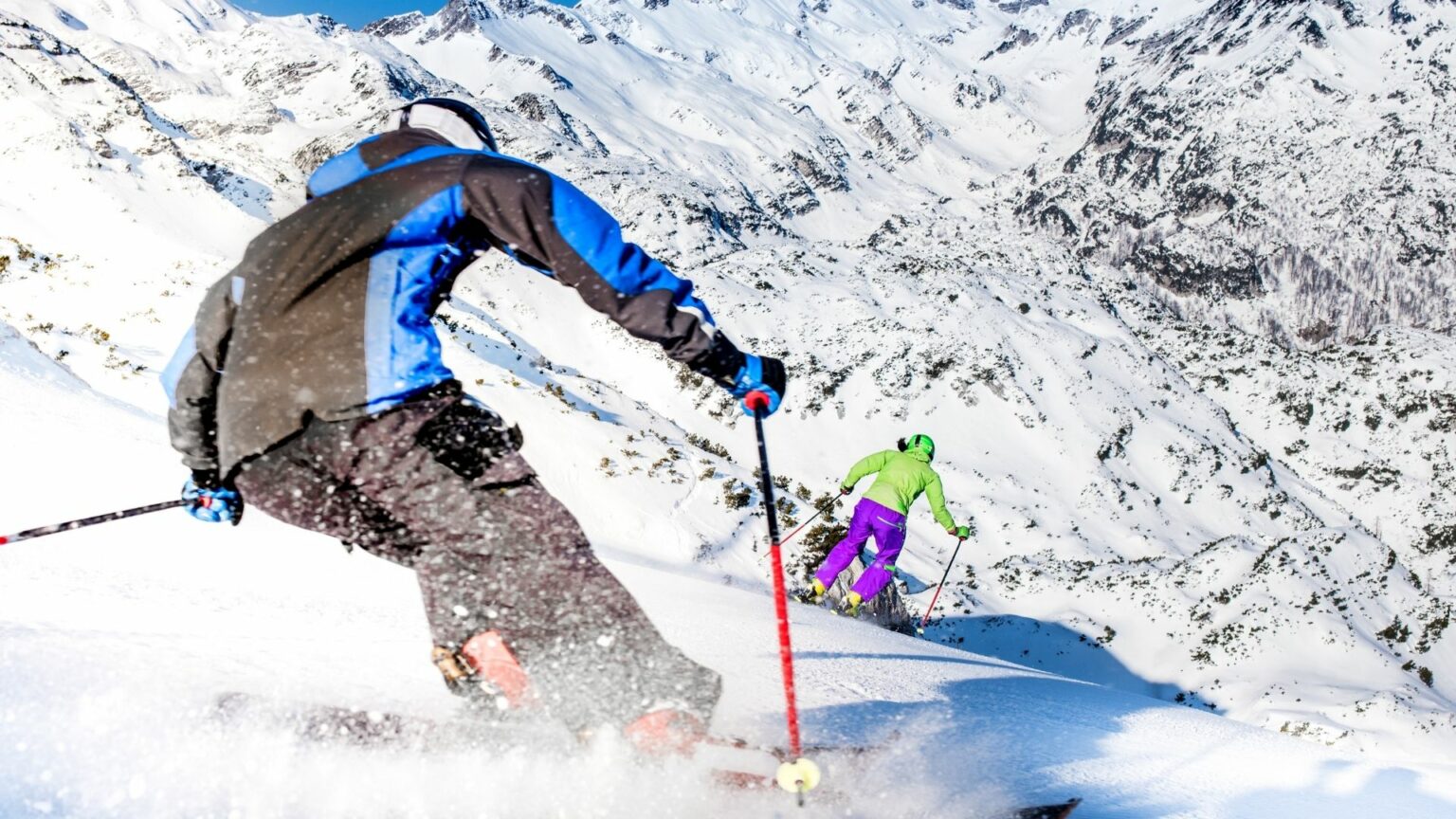
Skiing is an activity in which you enjoy a ‘no-frills’ experience: fresh air, natural wonder, and physical activity. While skiing was once done by the wealthy elite as a leisurely sport, modern day skiing has become entirely feasible for the average person, who can easily access public ski slopes.
Beginner skiers can now choose their equipment from many different options. Skiing is a popular sport worldwide, but which types of skiers would choose skis for different levels? There are beginner skis designed to give learners control and confidence, as well as advanced skis that are stiff and made to withstand the most blustery conditions.
Even though the skill level has become somewhat less important because modern ski technology allows beginners to choose their skis from a variety of different options, such as carving, or free-carving, or all mountain.
Beginners
People who are just beginning to ski or trying to learn how to turn should be encouraged to think about their legs. Many beginners make the mistake of focusing entirely on the skis, binding and pole. The more you focus on using your legs, the better you’ll perform. When gearing up for the day, beginners should wear a helmet to protect their heads. Boots should be comfortable and stiff, allowing good leg movement to turn and flex the skis.
A pair of high-quality goggles is also recommended as falling snow can enter any uncovered areas of the face and create irritation. On the inside of the glove linings, apply stick-on velcro pieces with an adhesive backing that can be removed when they get dirty or wet so that replacements can easily be swapped out when needed. The most important thing a beginning skier needs to learn is how to fall properly.
This can be one of the most difficult skills for a person starting out in skiing to achieve, particularly if that person has never fallen or otherwise felt the effects of gravity. It’s worth mentioning at the outset that good skiing depends upon the skier making good, smooth turns. To ski well is largely a matter of balance and concentration. Under some circumstances, being physically fit is important as well.
But if you’re thinking about buying new skis, then your main focus should be on finding skis that will make it easier to turn smoothly. Jumping, turning and stopping are the most dangerous moments when skiing. Before even attempting to do these sports activities, you will need to develop basic proficiency in skiing. To make a smooth turn, you will have to learn how to hold your body still on skis and also how to move it from side to side.
That is how you will turn. Ski for beginners should be soft and intermediate are softer (but more stiffening), good skis for a beginner are narrower in waist, lighter core and cap construction is used because as the beginner skier will turn most often they need a ski that is easy to turn. The softness will make it easier to turn. Narrower waist width of the ski equates to greater maneuverability and less effort. Lighter core will decrease weight, making them easier to lift when you are learning how to get on your skis.
For those who just want to sit on a slope for 10 minutes and drink a cup of cider, a pair of beginner skis is sufficient. Beginner skis are designed to be easy to use, and forgiving of new-snow mistakes. Some skis have a rocker on the nose and tail. That is, they rise higher towards the tip and tail than they do in the center of the ski. The idea behind rocker is to make it easier to initiate a turn. Rocker gets skis into turns more easily because it raises tips and tails in relation to center of pressure.
Advanced
Skiing is an elegant sport. Although advanced skiers take risks, they sacrifice neither elegance nor grace. In fact, these skiers are in complete control most of the time, and the risks they take are planned and considered. Advanced skiers look for the finest lines on a mountain from the top to sometimes beyond bottom. They set up special runs in order to see their line all the way down, and then choose their equipment to maximize performance.
Advanced is a designation for skiers who enjoy the challenge of extreme terrain, steepness and speed above expert level. This is the level for pushing boundaries and taking risks. These are the skiers who will ski groomer bumps just for fun (but only if you keep your speed up so you don’t get plowed). There are tricks that only experts can do, but advanced skiers can do them too; they’re just more aggressive with their skiing.
Having a good ski technique is the most important aspect in skiing at the Advanced level, straight after having enough skiing fitness. A good technique makes your skiing feel easier and more comfortable while still exercising all your muscles. At the same time, it will allow you to go down steeper runs without risk of hurting yourself without falling. Advanced all-mountain skis are designed for strong skiers who typically ski the entire mountain in one outing.
These skis are usually somewhat wider, so as to provide a softer ride on bumpy terrain and a more secure feel at high speeds. The tips and tails tend to be stiffer for good edge grip on icy surfaces and hard snow, but less-narrow waists enable easier turn initiation, even in soft snow. They are often twin-tip shape with rocker between the feet.
Advanced skis should have sidecut that matches their intended use: For example, moderate powder skis should have slightly longer sidecut radius than regular skis of the same width; extreme powder skis should be shorter; more gentle terrain can handle longer radius; more difficult terrain can handle shorter. As they are intended to be used in most conditions on the mountain, advanced skis tend to have a blend of high performance features without being specialized in any way.
Because the majority of the advanced skiers will be jumping, landing and skiing very fast down the mountain, they will need a ski that has great stability, is tough enough to handle landings in the snow, powerful enough to get up easily from a jump and really hard to break, be it with a hard turn or a fall. Skiing requires thousands of hours in the gym and on the slopes.
For a beginner, not only is the pastime extremely expensive, but it can also be an incredibly frustrating experience that is full of bruises and cracked ribs. For this reason, skiing has a very low success rate as a hobby for beginners. However, once a person learns how to ski properly, it becomes one of the most exhilarating activities out there. It’s fun for people of all ages and athletic levels.
Intermediate skiers tend to look for a ski with deep side cuts, similar to those of a racing ski. This is often accomplished by using a full camber design, which is one with identical contact on both the bottom and the top of the ski — the middle isn’t hollowed out. This characteristic gives the ski stability in hard snow and allows it to carve turns easily.
Towards the tips and tails of the long axis can be rocker, which is when there is less contact at the ends than in the middle. Rocker makes it easier to initiate turns (especially with smaller skis — on larger ones, rocker tips and tails are usually fatter than they are when they’re shorter) but tends to make you skid out more if you push into a turn.
Expert
At the top of alpine skis we find expert level skis, designed for aggressive and professional style skiing. Expert level skis are built with a stiffer flex towards their tips, which makes them resistant to both ‘chattering’ and ‘bouncing’ at high speeds. If a ski flexes too easily, when you put the pressure on it will chatter or bounce about instead of providing you with the smooth, even stroke that will get you up the mountain fast.
Professional skiers prefer a stiffer flex because they need more control over their skis to carry out quick, reflex turns at high speeds while also moving across steep terrain and through bumpy frozen snow. Today, the series of alpine skis include different models for different levels of skiers. Alpine skis need to be made with a material that is both light but also durable so that they can withstand the rigors of skiing for long periods of time.
Alpine skis are made using materials such as carbon, fibre glass, or aluminium alloys which meet this need or higher performance and speed in all snow conditions. Some Expert level ski models have some kind of a shape that makes carving easier. The carving ability of alpine skis is attributed to the speed, agility, flexibility and advanced design. Alpine skis that are designed for advanced riders have many features that make them perform exceptionally well even at very fast speeds.
These skis are more difficult to maneuver at slower speeds because they are much heavier and stiffer. You’ll find professional all-mountain, carving, park and downhill skis with different rocker ratios. Traditional alpine skis have the camber on the outside edges of the ski and extend all the way to the tip and tail. The rocker ratio refers to the difference in length between these two surfaces.
In short rocker you’ll see a difference of about two or three centimeters, in longer rocker, around 6-7 cm. The appeal of skis with rocker is instantly apparent when you set foot on them. You turn more easily and the ski pivots naturally underfoot. The downside, however, is that they lose some of their grip on hard snow and ice.
Type of Ski
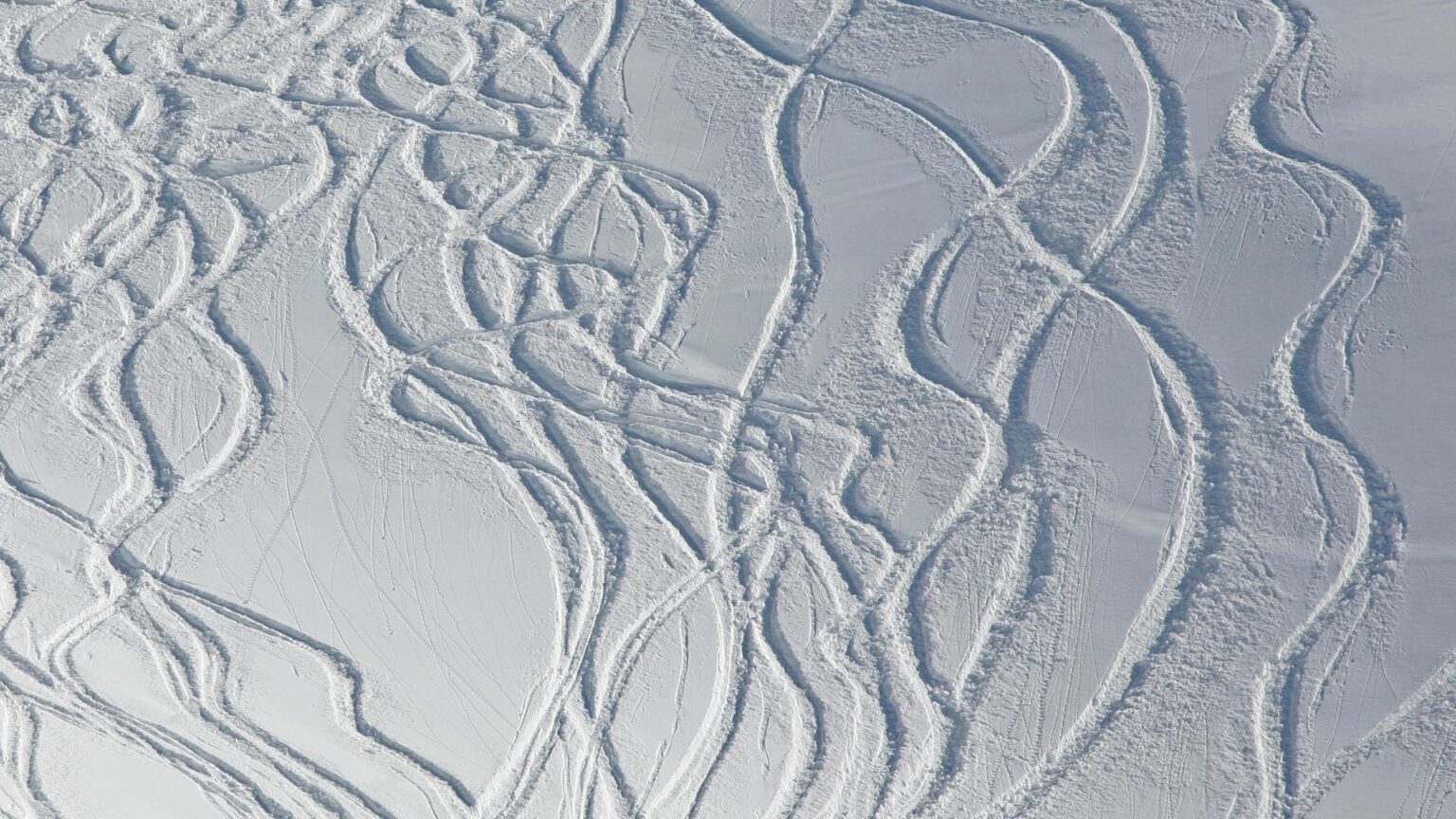
Alpine skis were originally used for competitions in the Alps . As the young sport began to spread from the Alps, it was taken up by Americans in Colorado. The first American ski camp was set up in 1908 on Mt. Henderson in Colorado. By 1911, there were almost fifty ski camps in Colorado alone. The first Swiss ski school was opened at St. Moritz in 1864, and in 1890 — at the foot of Zinal Rothorn — was founded a famous sports club where, apart from skiing and ice-climbing, fencing, boxing and tennis were also taught.
Width
Alpine skis can be measured at the waist, tips, and numerous other places. But the most common place to measure the ski is at its narrowest point, called the waist. The width of a ski at the waist is an important specification because it affects how easily a ski will turn. Skis made narrower at their waists turn more easily, and skis made wider turn less easily. No matter whether terrain is flat, steep or bumpy, your ski’s width plays a major part in determining its performance.
For good performance, ski width should be adapted to the snow and terrain one is going to ski. The width of a ski affects their performance in different snow conditions. Narrow skis are best suited to hard snow, which is why they’re common among downhill racers and for use at resorts with a mainly alpine terrain.
Wide skis, often called powder skis, perform better on soft snow and in deep powder. Nose / Waist / Tail is the industry agreed upon way to describe ski dimensions. Basically it’s a set of 3 numbers to specify the size of a ski. Alpine ski dimensions are specified with a 3 dimensional measurement called the ‘turning radius’.
This is described in several ways, e.g. 121-90-108, 121-83-105, etc. Using the waist / tail numbers (82, 105) as an example, this means that the turn radius of skis that have a 120 mm waist and 110 mm tail, i.e. the radius to point where skis are together after a full turn (82+105), will be 90 mm from edge to edge (121 minus 41). The actual turn shape might be even tighter than this nominal 90 mm turning radius because rear ski may not actually follow the front perfectly.
Turning Radius
The turning radius of a ski is determined by a number of factors. The three main factors are its width, the shape of the tip and tail and the shape of the waist — or section between the tip and tail. The shorter a ski’s radius, the more maneuverable it is. This attribute makes it easier to turn, but also decreases its speed, dampens vibrations and encourages more effort from the skier.
The most common turning radii for alpine skis are between 10m and 30m, usually expressed as a ‘radius of 13′ (13m). The narrower the waist compared to the nose and tail, the shorter the turning radius and therefore the deeper the side notch. The skis’ sidecut radius is not the same for every turn.
For example, in a regular turn in fresh powder, the radius of the back outside ski is smaller than that of the front inside ski. This means that when we make a regular turn, we can’t necessarily use the same radius for both of the skises. So when performing our turns correctly, we must keep an eye on how skis are set up and orientate them depending on how we want to make our turns.
Lateral notch depth on alpine skis has largely determined the turning radius since skis were invented in the mid-1800s. The greater the lateral notch of a ski, the easier it will be to turn. The amount of lateral play you need depends on your skiing style.
If you are going to make lots of short turns on hard-packed snow, choose skis with a deeper lateral notch (a shorter turning radius). If you are going to make fewer long turns on powder, select those with a shorter notch (a larger turning radius). The combination of a few different radii on the same edge produces the modern skis.
Radius :
- < 16 m (short) is suitable for carving, allmountain, downhill
- > 22 m (long) downhill, freeride
- 17-22 m (medium) allmountain, park
Type of Deflection
The deflection shapes underfoot usually consist of rocker, camber and reverse-camber, which are often combined together to give the optimum performance. Skis are built with some deflection in the front part of the tip and the tail, and with a flatter platform in between the bindings.
The reason for this is that forward flex helps skiers to perform turns at slower speeds, while the flatter area between the bindings is responsible for good performance at higher speeds. The rocker ski sag (reverse camber) after the 1990-1991 season changed also. The ski companies found that when there was more of a reverse rocker it resulted in a much better skiing experience.
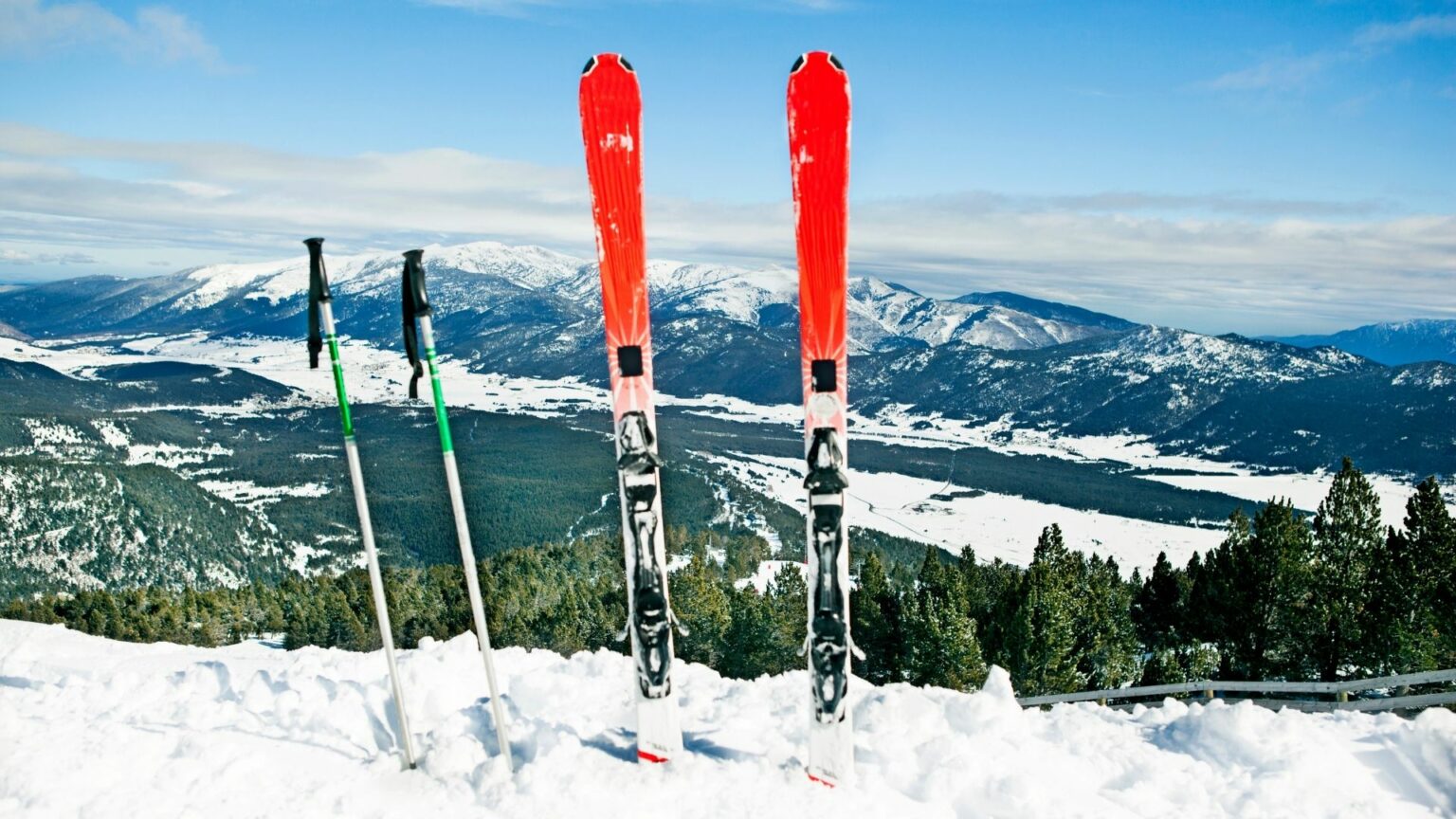
Camber
The camber remains in contact with the snow for a greater proportion of the ski turns than does a rocker, which results in more predictable turns and more effective pressure on the snow. The camber together with the tip and tail rocker is responsible for generating much of the force that propels us forward when we turn — a force that no other major competitive sport can provide.
Simply having «effective edge» on the snow is not enough. Camber refers to the format of the side slopes. A ski or snowboard is usually shaped so that the center of its periphery is higher (or the tip and tail lower) than the middle. This creates a bend in the deck, allowing for the upward curve of the board’s tip and tail when in use. The camber enhances performance both by increasing swing weight and by altering how certain forces are distributed over different points on the deck.
The former allows for better balancing and turning, thereby enhancing skiing / riding. The latter means that more force will be transferred to a single point on the deck under each foot during quick turns or while landing jumps, which increases time in mid-air and therefore enhances performance in those situations. Professional riders often choose the Camber.
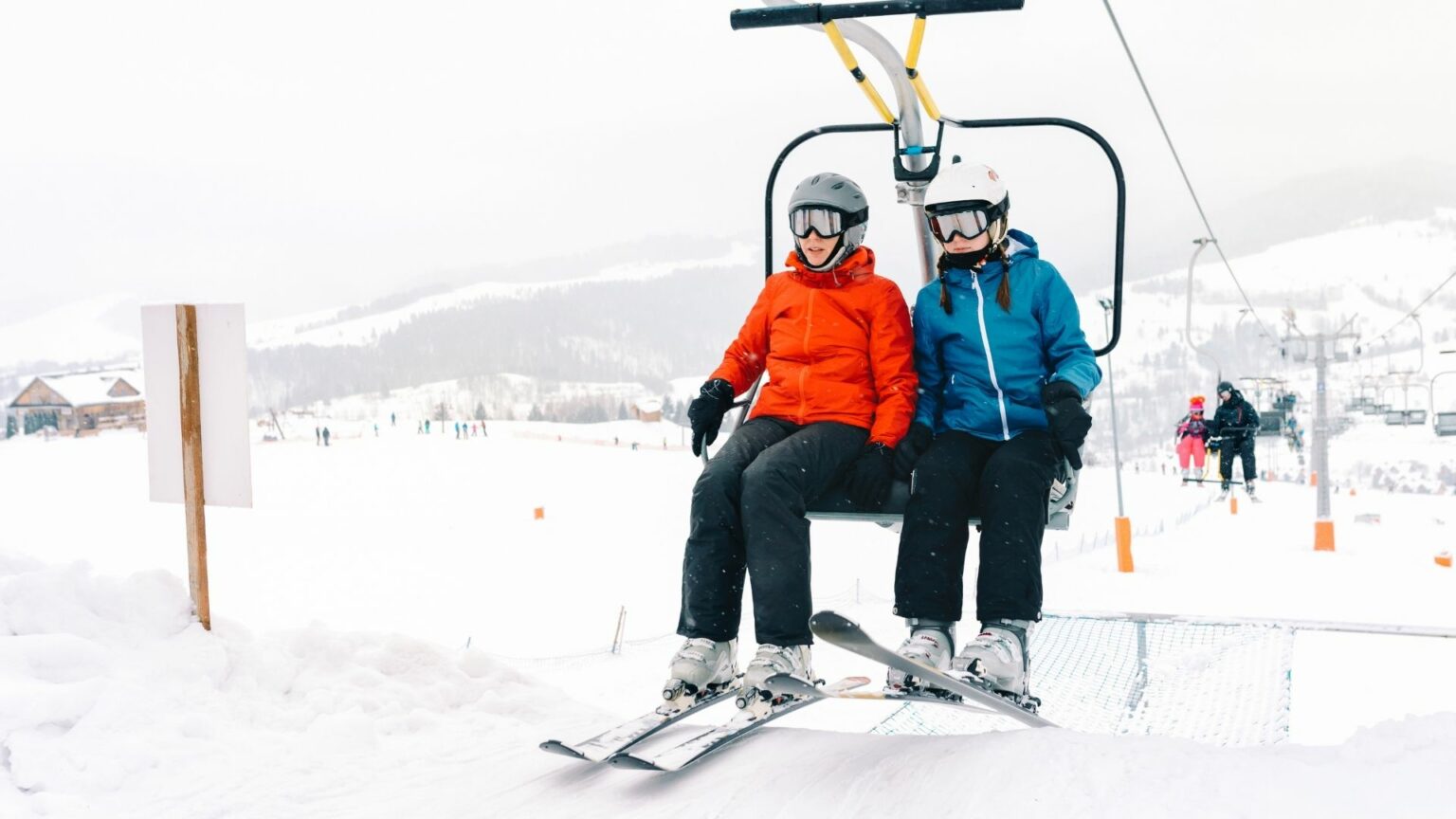
Rocker
The rocker camber allows for a pressure free edge, which is a good feature for moguls and powder where you want to ride the same edge of your ski all the way down the run. This feature also gives more stability for making parallel turns on hardpacked snow. The difference between the rocker and camber is that the rocker applies uneven amounts of pressure on skiers depending on heel and toe position, where as traditional camber applies equal amounts of pressure in both positions.
The benefit of this design is a huge increase in edge angle. The disadvantage is that skis that employ this method are harder to bend and less stable out of turns. Distinguishing between the rockered and reverse-rocker types of skis can be more difficult than most people would assume. The biggest clue is a common one: the tip. A regular rockered ski has its greatest rocker at the tip while a reverse-rocker ski has its greatest rocker at the beginning of the sidecut.
Under the load of a snowboarder, all skis will have their camber reversed whether they be all mountain freestyle, or park and pipe. Under a rider’s weight, the tips of boards with camber are much closer to straight up than they are to the tail being pressed under — this is called «reverse camber». All types of skis that have been used to descend hills have reverse camber. Boards that do not have reverse camber either have a «rocker» or are not shaped for hill descent. If you want to improve your skiing, take a ski with a rocker to the slopes. Rocker adds a lot of fun and ease on powder days.
It makes it very simple to turn and almost impossible to catch an edge. This will allow you more time to enjoy the snow without thinking about how to get back home again. The rocker ski is, therefore, a good choice for learners. The wide waist helps you stay balanced on your skis through the most extreme turns, so you can ski close to the edges of the trails. Rocker reduces the twisting action between foot and ski while traversing.
Rocker / Camber
This ski is a traditional camber underfoot flex with an elongated upward nose borrowed from a full rocker ski. This camber has the front contact point placed farther from the nose, while the rear contact point is located close to the tail. The elevated bow makes it easier to float in deep snow, while the camber at the back helps hold the edges and makes for maneuverable skiing.
Today more and more skis are being developed with this camber for carving, allmountain and freeride. Of course, this camber is significantly different from others. But if you’re looking for an alpine ski that’s great on the downhill and can easily handle packed snow, you’ll love this camber.
Rocker / Camber / Rocker
These skis are characterized by playfulness and buoyancy due to the rocker and the camber due to edge retention. The contact points on skis with this camber are closer to the middle of the ski than on models with full camber, but still not under the rider’s feet. The camber in the middle ensures more efficient edge control in hard snow and increases the skier’s grip and stability.
A rocker nose and tail help make it easier to float in deep snow and turn. This camber adds playfulness for park aficionados, surfacing for downhill enthusiasts, forgiving beginner mistakes and providing versatility for those with only one pair of skis. Most ski manufacturers produce several Rocker / Camber / Rocker combinations with different rocker to camber ratios, different ski waist and side cutouts.
Rocker / Flat / Rocker
The next variety of rocker, which provides a more challenging edge hold than the full rocker. But this camber does a great job with turns and fluff.
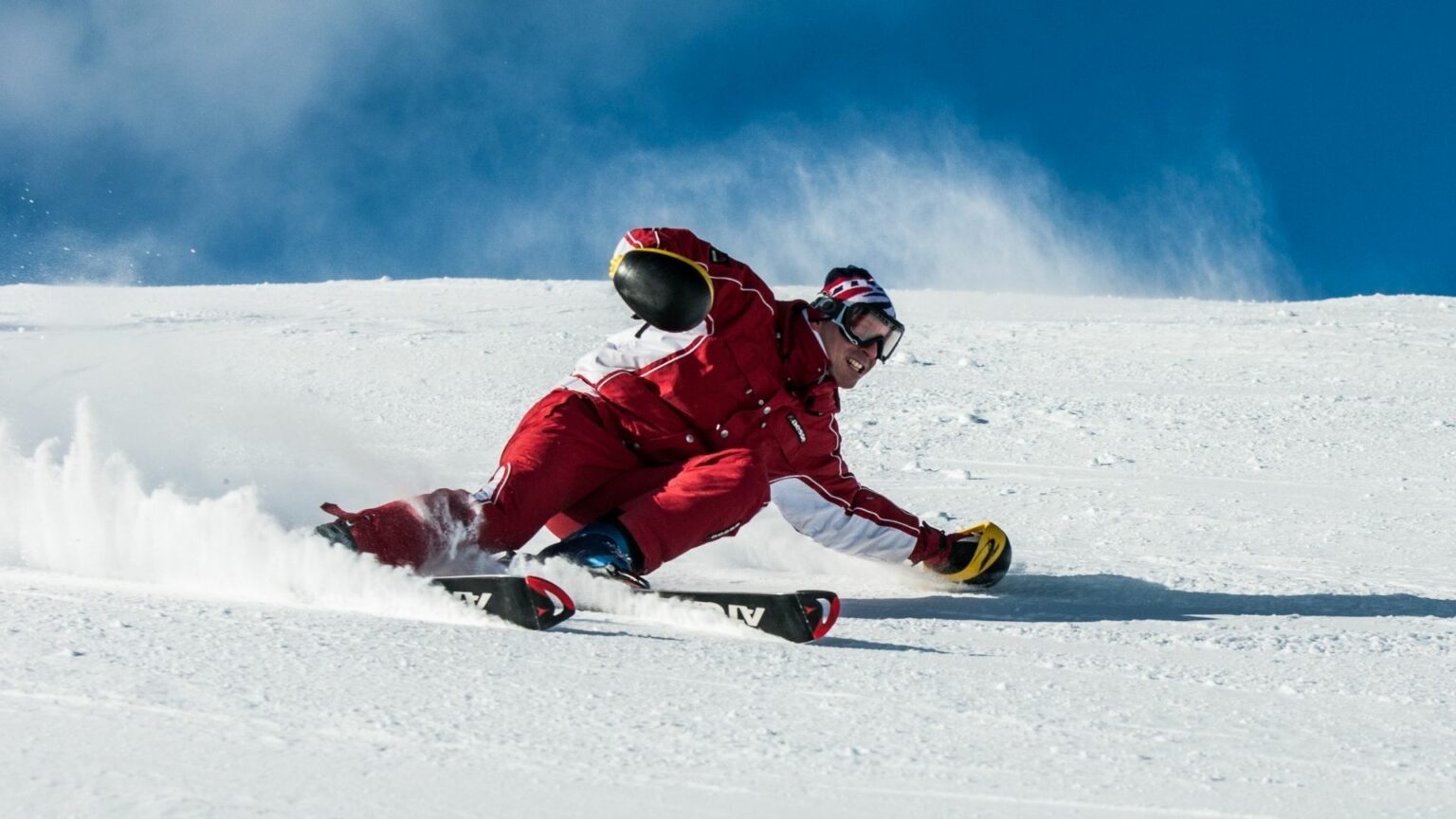
Additional Types of Sag
Ski camber comes in five main varieties, although there are other lesser-used cambering types. Most alpine skis are camber, so you can generally pick out a good quality pair just by feeling for the distinct camber shape under your thumb. Camber is still beneficial in most instances, but it does offer some disadvantages. Camber works well for carving and other edge control when going parallel to the fall line on groomers or slightly off-piste. However it slides more than rocker skis at higher speeds. This property is useful in powder.
A rocker ski floats better in powder than a cambered ski, especially at high speeds. Rocker skis have been shown to be faster in powder than equivalent cambered skis because of their ability to separate the snow through springiness rather than by sliding. This is essential when strong winds are present as they increase the amount of time the skier spends going into and coming out of turns, which would otherwise result in extremely fast and deep sinking into the fresh snow.
A cambered ski is shaped so that it rises up in the middle and then curves down toward the tips. The result of this design is an increase in surface area, which results in more friction between the skier and the snow. A skier who leans at an extreme angle will be able to turn tighter before the snow begins to slide out from under his feet. Such a design generally leads to better performance, but it comes at the cost of reduced stability. Cambered skis, common among backcountry telemarkers, are usually paired with a climbing skins for ascending snowy hills and mountainsides, something that a skier with a flat-bottomed pair cannot do as effectively.
Which deflection is better? The deflections are not competing with each other, and it all depends on your preferences. As a general rule, the camber allows for better edge hold and gives stability on hard snow and at high speeds, while the rocker allows for better downhill hold and provides a softer ride. For beginners, the rocker is more suitable, as it’s easier to turn and keep your balance. Advanced skiers who enjoy free skiing will enjoy a camber ski.
Ride Location
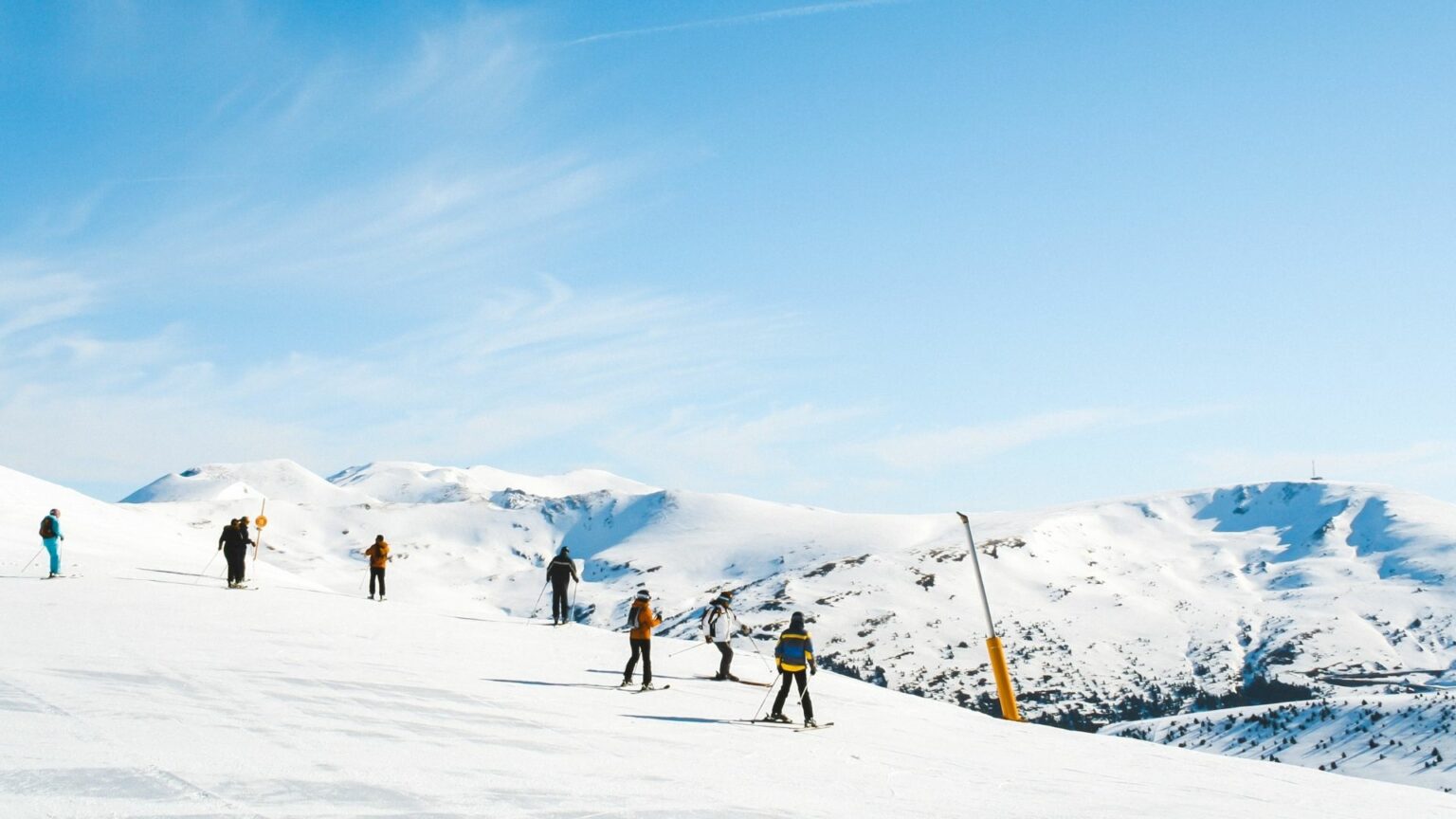
These days, all good skis go the same way. These days, the boundaries between different types of skis are becoming increasingly blurred as many skis fall into several categories at once.
Allmountain
Allmountain skis are designed to ski anywhere on the mountain. As a result, these skis can best be described as having medium stiffness under foot, a softer tip and tail, and having a reasonably rockered tip and tail. Allmountain skis also favor having some rocker in the nose but often use reverse sidecut (aka ‘banana’) in the tip or tail for added contact pressure. Where you put them, that’s where they will go: ice, fluff, hard snow, loose snow, they will go.
However, that doesn’t make them the best experts in any particular terrain. So when you want a little bit of everything, opt for these skis. Universal skis can come in a variety of shapes and widths to meet the specific needs of different skiers. These skis usually have a thick waist, approximately 80-110 mm. Alpine skis are great for getting to know the mountains and figuring out where you will enjoy skiing the most.
Skis for Deep Snow
These models of skis are designed for riding in deep snow. If you have to search for the freshest snow in the resort or head far into the mountains in search of it, a downhill ski will give you good floatation! The wide (115 mm or more) and most often rocker camber and relatively soft stiffness of this ski category.
Unique side-cut shapes, such as the reverse side-cut, are found in these skis; the nose and tail are not always the widest parts of the ski. Modern alpine skis are versatile enough to work on harder snow as well.
Carving Skis
Carving skis were made for carving lovers. They are thinner at the center, thicker at the edges and their tips are pointier. What else is great about these skis is that they glide very smoothly even through thick snow because they are specially designed to cope with all kinds of snowy surfaces. They are great on groomed trails with hard snow. Carving skis work great for beginners. They will help you get to the next stage of skiing.
Skis for The Park
Freestyle skis are designed for skiers who spend most of their time in the park. This is why they are a perfect choice for all kinds of jumps, rails and arrows. They’re bred to perform flawlessly on hard and icy snow. This makes them super-stable, so you’re always in control of your movements.
The freestyle category of ski is easily the most innovative and influential when it comes to the style and design of skis. The best park skis are made with plastic topsheet materials that don’t go rock hard when they get cold or icy– unlike some skis intended for deep snow and ice. Park skis are for the freestyle skier who spends a lot of time in the park. The best park skis have narrowed waists with full camber.
The narrower waist allows you to press into the ski and do a thorough job sinking an edge into slippery snow to stay on top of the turn or a landing. You therefore should choose a waist width that matches your ability and regular skiing style. As a general guideline, the more camber a park ski has, the lighter a skier can be and still get good performance out of it. You’ll almost always find these skis with thicker, stronger edges, tight extruded bases.
Backcountry Skis
Backcountry skis are designed to be used on the mountain. Backcountry refers to the heavily forested areas beyond the ski resort boundaries. The goal of these skis is to allow people to travel more than they would be able to using snowshoes. They look a lot like racing skis because they are similar in many aspects, but have a wider base to provide extra stability when ascending and descending steep slopes. Wide skis, with a shape that is the reverse of that found in downhill skis, are made specifically for mountainous terrain.
One of the reasons they are wider is because they will be cutting through snow while ascending up a hill. These are often lighter than downhill skis, which may give them higher speeds on descents and make them better for intermediate or advanced users. Wider and heavier models are usually used for winter / deep snow hiking, and lighter skis for spring/summer / long distance hiking.
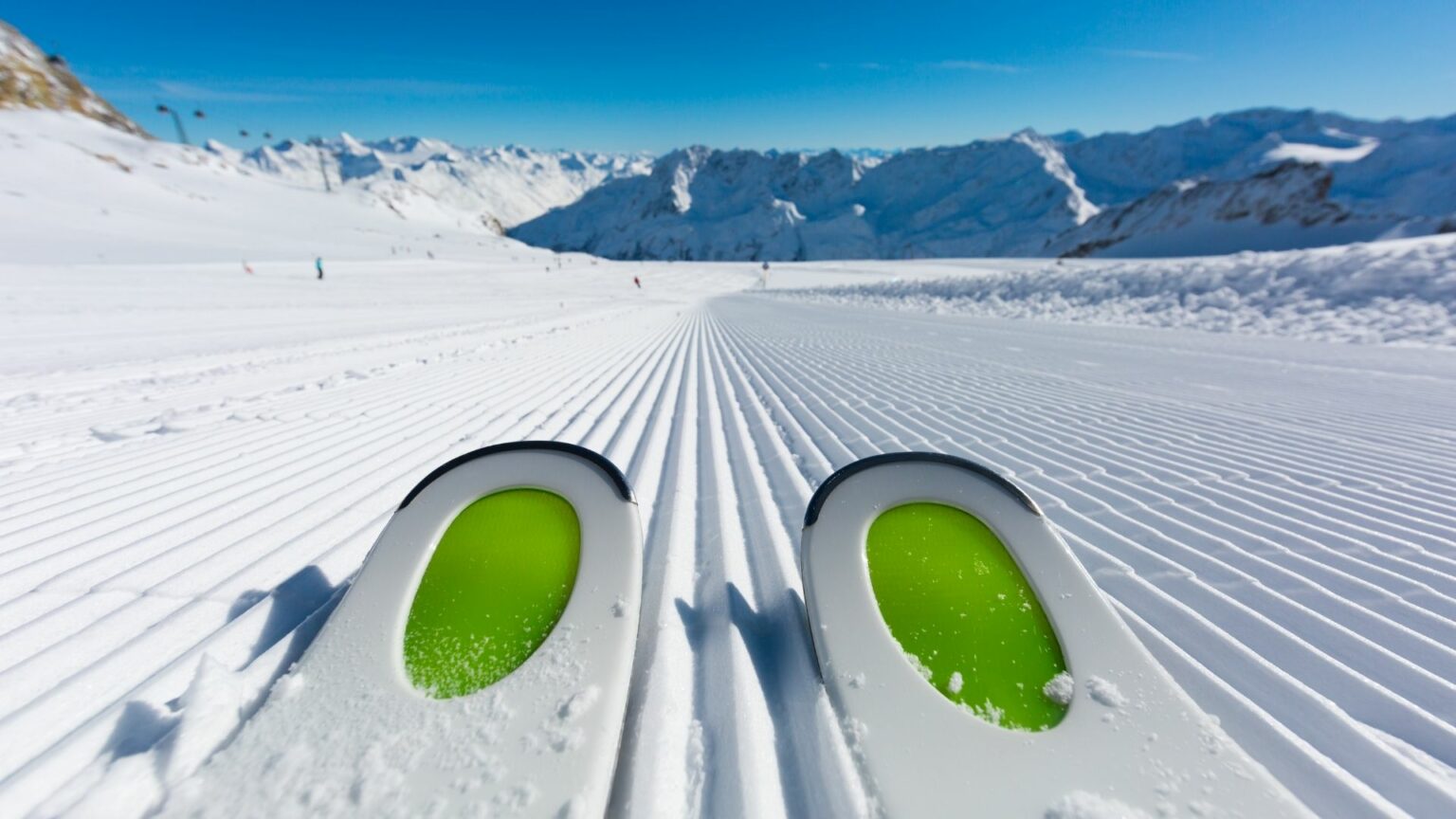
People who are fond of winter sports like skiing and snowboarding undoubtedly remember the time when they first sat on the skis. Many even recall the brand, model and size of the skis they used in their childhoods and those memories still give them a feeling of delight. The passion for skiing never leaves us but it is possible to lose motivation when you don’t find proper skis for yourself.
The best way to keep your level up is to choose not only properly fitted but also high-quality pieces. The best skis have the perfect mix of comfort and control. They’re reliable in all conditions, giving you the confidence to go faster, take more risks, and push yourself to new heights. As you increase your skills and fitness, you’ll discover that you can ski faster than you ever imagined.
You Also May Like
Copyright 2026 © Top Sports For Kids
Topsportsforkids.com is a participant in the Amazon Services LLC Associates Program, an affiliate advertising program designed to provide a means for sites to earn advertising fees by advertising and linking to Amazon.com.

